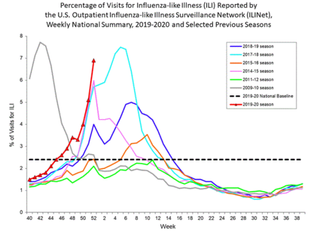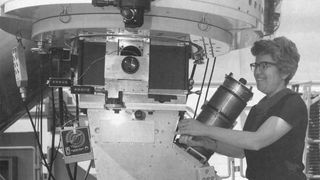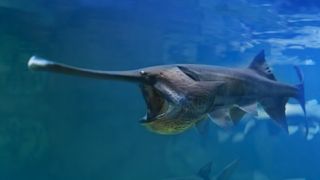Alberta risks ‘double jeopardy’ if it exits Canada Pension Plan, leading expert warns
Provincial plan could burden future generations with falling contributions and declining assets

A supporter attends a rally for Wexit Alberta rally in Calgary.
The province is exploring withdrawing from the Canadian
Pension Plan.Reuters/Todd Korol/File Photo
Victor Ferreira
January 8, 2020
One of Canada’s leading pension experts is warning Albertans to consider the “double jeopardy” of falling contributions and investment asset values they might be subjecting future generations to if they replace the Canada Pension Plan with a provincial alternative.
In a report published on Wednesday, Keith Ambachtsheer, president of KPA Advisory Services and director emeritus at the International Center for Pension Management, said that a potential switch to a provincially run pension plan could cost hundreds of millions of dollars to establish and would also put its contributors in danger of facing serious underwriting and investment risks.
Primarily, Ambachtsheer is concerned an Alberta Pension Plan could be used to double down on the oil and gas industry.
“It’s a simple diversification argument: If your underlying economy is to a significant degree dependent on the health of a particular industry that if you also put your retirement savings into that industry, it’s double jeopardy,” said Ambachtsheer. He added that Norway avoided making the same error with its fossil fuel industry by ensuring its pension plan’s investments are all international and beginning the process to divest from oil and gas.
Victor Ferreira
January 8, 2020
One of Canada’s leading pension experts is warning Albertans to consider the “double jeopardy” of falling contributions and investment asset values they might be subjecting future generations to if they replace the Canada Pension Plan with a provincial alternative.
In a report published on Wednesday, Keith Ambachtsheer, president of KPA Advisory Services and director emeritus at the International Center for Pension Management, said that a potential switch to a provincially run pension plan could cost hundreds of millions of dollars to establish and would also put its contributors in danger of facing serious underwriting and investment risks.
Primarily, Ambachtsheer is concerned an Alberta Pension Plan could be used to double down on the oil and gas industry.
“It’s a simple diversification argument: If your underlying economy is to a significant degree dependent on the health of a particular industry that if you also put your retirement savings into that industry, it’s double jeopardy,” said Ambachtsheer. He added that Norway avoided making the same error with its fossil fuel industry by ensuring its pension plan’s investments are all international and beginning the process to divest from oil and gas.
Why AIMCo taking over Alberta’s pension scheme could be a high-risk, high-reward gambit
Alberta to study ‘compelling case’ of withdrawing from Canada Pension Plan, Jason Kenney says
An Alberta exit from Canada’s pension plan would cost the rest of the country big time
In November, Alberta Premier Jason Kenney floated the idea of pulling the $40 billion Alberta has in the CPP and putting it under the management of the Alberta Investment Management Corporation amid frustrations that the province’s economic interests were being neglected by Ottawa. A “fair deal” panel made up of former politicians and business leaders has since been created and has been consulting with Albertans through town halls about withdrawing from the pension, among other issues. The panel will present its report to the government by March 31.
An Alberta Treasury Board and Finance spokesperson said it welcomes all submissions about the potential creation of an Alberta Pension Plan to the panel, including Ambachtsheer’s.
“It is worth noting that there have been a variety of views expressed by experts on this topic, including those from the Fraser Institute, the CD Howe Institute and the Alberta Investment Management Corporation, all of which highlighted potential benefits of an Alberta Pension Plan,” the spokesperson said.
Some of the appeal surrounding a withdrawal is centered around the potential for Albertans to make lower contributions than the current 9.9 per cent of pay. Studies from the Fraser Institute and C.D. Howe suggested that an Alberta Pension Plan could cut contributions to the six-to-eight-per-cent range while providing the same benefits. This is mostly due to the fact that the majority of Alberta’s contributors are much younger and higher-paid than the rest of Canada’s.
That younger population — the median age, according to Statistics Canada, is 37.1 years old and the youngest in the country — has led to Albertans contributing more than they otherwise would to the plan, Kenney argued in November.
Ambachtsheer questioned the legitimacy of a lower contribution rate due to the potential of Alberta’s younger citizens leaving the province for greener pastures should the oil and gas industry continue to decline.
Should the industry continue to struggle, Ambachtsheer said he worries there could be fewer jobs available in the province, especially those that pay well. That could impact the total contributions made to the APP and the only way to make up for the lost capital would be to raise the rate.
Building out and administering the plan could also lead to a exorbitant bill for taxpayers to front. Ambachtsheer points to the $70 million Ontario spent developing a potential pension plan of its own between 2014 and 2016, before joining the CPP expansion instead.
As for the costs to operate it, Ambachtsheer uses the example of the Alberta Pension Services Corporation, which provides pension administration services to 375,000 public sector employees in the province. It pays $175 per person, per year to do so. Using that math, it would cost $525 million to administer the plan to the three million Albertans currently making CPP contributions.
The process has yet to be tested, but no province has ever withdrawn from the CPP.
• Email: vferreira@nationalpost.com





